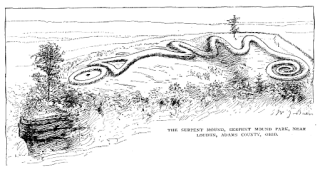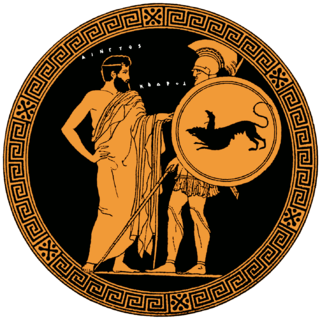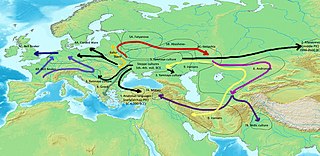 W
WThe 2nd millennium BC spanned the years 2000 through 1001 BC. In the Ancient Near East, it marks the transition from the Middle to the Late Bronze Age. The Ancient Near Eastern cultures are well within the historical era: The first half of the millennium is dominated by the Middle Kingdom of Egypt and Babylonia. The alphabet develops. At the center of the millennium, a new order emerges with Minoan Greek dominance of the Aegean and the rise of the Hittite Empire. The end of the millennium sees the Bronze Age collapse and the transition to the Iron Age.
 W
WThe 17th century BC was a century which lasted from 1700 BC to 1601 BC.
 W
WThe 15th century BC is a century which lasted from 1500 BC to 1401 BC.
 W
WThe 14th century BC is a century which lasted from the year 1400 BC until 1301 BC.
 W
WThe 13th century BC was the period from 1300 to 1201 BC.
 W
WIn the classification of the archaeological cultures of North America, the Archaic period in North America, taken to last from around 8000 to 1000 BC in the sequence of North American pre-Columbian cultural stages, is a period defined by the archaic stage of cultural development. The Archaic stage is characterized by subsistence economies supported through the exploitation of nuts, seeds, and shellfish. As its ending is defined by the adoption of sedentary farming, this date can vary significantly across the Americas.
 W
WThe Avellino eruption of Mount Vesuvius refers to a Vesuvian eruption in c. 1995 BC. It is estimated to have had a VEI of 6, making it larger and more catastrophic than Vesuvius's more famous and well-documented 79 AD eruption. It is the source of the Avellino pumice deposits extensively found in the comune of Avellino in Campania.
 W
WThe Chorrera culture or Chorrera tradition is a Late Formative indigenous culture that flourished between 1300 BCE and 300 BCE in Ecuador. Chorrera culture was one of the most widespread cultures in pre-Columbian Ecuador, spanning the Pacific lowlands to the Andean highlands, and even into southern Colombia.
 W
WCodrus was the last of the semi-mythical Kings of Athens. He was an ancient exemplar of patriotism and self-sacrifice. He was succeeded by his son Medon, who it is claimed ruled not as king but as the first Archon of Athens. He was said to have traced his descent to the sea-God Poseidon through his father Melanthus.
 W
WSeveral chronologies in the archaeology of the Americas include a Formative Period or Formative stage etc. It is often sub-divided, for example into "Early", "Middle" and "Late" stages.
 W
WHabiru is a term used in 2nd-millennium BCE texts throughout the Fertile Crescent for people variously described as rebels, outlaws, raiders, mercenaries, bowmen, servants, slaves, and laborers.
 W
WThe Indo-European migrations were the migrations of Proto-Indo-European language (PIE) speakers, as proposed by contemporary scholarship, and the subsequent migrations of people speaking further developed Indo-European languages, which explains why the Indo-European languages are spoken in a large area in Eurasia, from India and Iran to Europe.
 W
WVarious outdated theories have postulated waves of migration during the Middle Bronze Age in the Ancient Near East. Drews and Dietrich connect these alleged "mass migrations" with the coming of the Greeks, moving from former settlements into the southern and central Balkans, displacing the former pre-Greek inhabitants of Greece. Mallaart makes reference to a supposed migration of the Hittites to their earliest known home in Kültepe during the same period.
 W
WThe middle chronology is one chronology of the Near Eastern Bronze and Early Iron Age, which fixes the reign of Hammurabi to 1792–1750 BCE and the sack of Babylon to 1595 BCE.
 W
WMycenaean Greece was the last phase of the Bronze Age in Ancient Greece, spanning the period from approximately 1600–1100 BC. It represents the first advanced and distinctively Greek civilization in mainland Greece with its palatial states, urban organization, works of art, and writing system. The most prominent site was Mycenae, in the Argolid, after which the culture of this era is named. Other centers of power that emerged included Pylos, Tiryns, Midea in the Peloponnese, Orchomenos, Thebes, Athens in Central Greece and Iolcos in Thessaly. Mycenaean and Mycenaean-influenced settlements also appeared in Epirus, Macedonia, on islands in the Aegean Sea, on the coast of Asia Minor, the Levant, Cyprus, and Italy.
 W
WPhoenicia was an ancient Semitic-speaking thalassocratic civilization that originated in the Levant region of the eastern Mediterranean, primarily modern Lebanon. It was concentrated along the coast of Lebanon and included some coastal areas of modern Syria and Galilee, reaching as far north as Arwad and as far south as Acre and possibly Gaza. At its height between 1100 and 200 BC, Phoenician civilization spread across the Mediterranean, from the Levant to the Iberian Peninsula.
 W
WPoverty Point State Historical Site is a prehistoric earthwork constructed by the Poverty Point culture. The Poverty Point site is located in present-day northeastern Louisiana though evidence of the Poverty Point culture extends throughout much of the Southeastern Woodlands. The culture extended 100 miles (160 km) across the Mississippi Delta and south to the Gulf Coast. The Poverty Point site has been designated as a U.S. National Monument, a U.S. National Historic Landmark, and UNESCO World Heritage Site. Located in the Southern United States, the site is 15.5 miles (24.9 km) from the current flow of the Mississippi River, and is situated on the edge of Macon Ridge, near the village of Epps in West Carroll Parish, Louisiana.